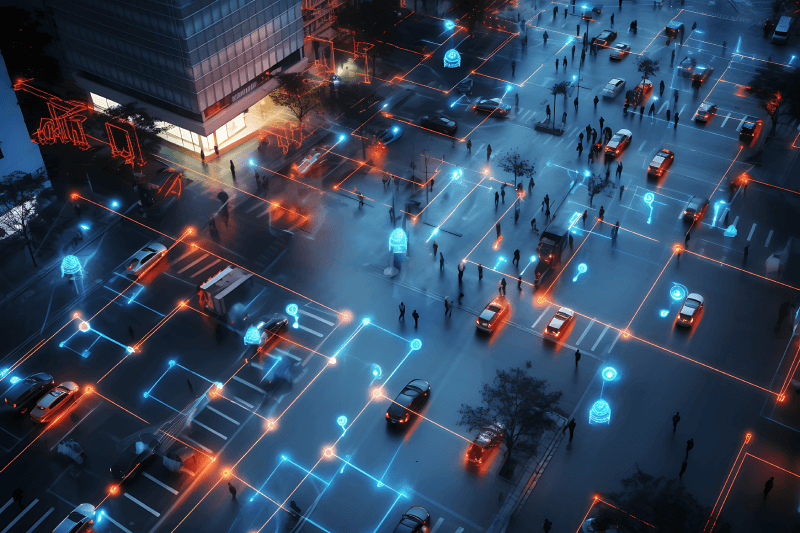WHAT DOES A COMPUTER VISION ENGINEER DO?
Updated: Dec 24, 2024 - The Computer Vision Engineer develops software solutions in a dynamic client-driven environment, ensuring alignment with project specifications. Collaboration with other developers is key to designing and optimizing code, as well as creating flowcharts and user guides for programs. The role also involves routine maintenance, documentation, and the design and implementation of cutting-edge computer vision models.


A Review of Professional Skills and Functions for Computer Vision Engineer
1. Computer Vision Engineer Duties
- Data Analytics: Machine- and image data analytics.
- Conceptual Design: Conceptual design, development, and optimization of computational neuronal networks.
- Machine Learning: Development of supervised- and reinforced learning-based networks to detect microscopic particle contamination and material defects on processed semiconductor materials and tool surfaces.
- Data Collection: Setup and maintenance of (vision-) data collection architecture (software).
- Algorithm Implementation: Design and implement machine learning algorithms in Python and/or C++.
- Data Curation: Work with camera, laser, radar, and ultrasound data and curate datasets for machine learning.
- Collaboration: Collaborate closely with cross-functional teams including planning systems and engineering teams.
- Automation: Automate training pipelines and develop data analytics tools to improve performance on a growing dataset.
- Deep Learning: Develop deep neural networks to solve real-world robotics challenges.
2. Computer Vision Engineer Details
- Computer Vision: Design and develop Computer Vision solutions to maintain and optimize the model performance of algorithms.
- Image Understanding: Develop image understanding algorithms, including but not limited to OCR, Re-ID, object detection, and facial recognition.
- AI Research: Research new AI solutions and make their practices best practices.
- Communication: Communicate with internal and external partners to initiate new AI solutions and promote the AI culture.
- Model Improvement: Understanding, developing, improving, analyzing, and testing to improve the accuracy of computer vision models.
- Problem Solving: Working on problems such as image recognition, regression, object detection, instance and semantic segmentation, lines and keypoints detection, multi-task learning, multi-view / multi-modal classification, uncertainty estimation, robustness.
- Model Optimization: Optimizing the models to run efficiently in the production environment.
- Performance Monitoring: Developing metrics to monitor the performance of models run in the production environment.
- Team Collaboration: Working in cooperation with the team of property analysts to improve the annotation process.
3. Computer Vision Engineer Responsibilities
- Outcome Projection: Projecting outcomes and isolating issues that need to be resolved to make programs more effective.
- Deep Learning Research: Performing fundamental research work on applying deep learning to different types of data.
- Data Pipeline Construction: Constructing data pipelines, marked data collection, processing, cleansing, integrating, and optimization applied to learning algorithms.
- Algorithm Development: Developing, testing, and evaluating deep learning algorithms to tackle the underlying problem and business outcomes.
- Solution Strategy: Proposing solutions and strategies to business challenges through Deep Learning and Computer Vision.
- Model Training: Train, validate, and deploy cutting-edge machine learning models.
- Communication: Communicate substantiated recommendations based on experimental results.
- Architecture Discussion: Discuss and implement architecture considerations with the team.
- Quality Assurance: Ensure high quality of work using both manual and automated testing.
4. Computer Vision Engineer Accountabilities
- Software Development: Develop software solutions on a continuous basis in a shifting client needs-based environment.
- Specification Meeting: Work with the project manager or product owner to meet specification needs.
- Team Collaboration: Collaborate with other developers and grow team dependency to design and optimize code.
- Documentation: Create flowcharts and user guides for new and existing programs.
- Task Documentation: Document all programming tasks and procedures.
- Software Maintenance: Perform routine software maintenance.
- Computer Vision: Design, develop, and productionize computer vision models.
- Literature Review: Keep abreast of the latest literature within computer vision (specifically object detection) to prototype new models.
- Technology Exploration: Explore and implement technologies for model runtime.
- Code Quality: Write clean, production-ready code.
5. Computer Vision Engineer Functions
- Feature Development: Develop novel features for the next generation of AR products.
- Algorithm Integration: Design, implement, and integrate existing and new Computer Vision and Augmented Reality algorithms.
- Technique Research: Research new techniques to improve the speed and quality of existing algorithms for Computer Vision.
- Tracking Algorithms: Contribute to state-of-the-art tracking algorithms.
- Team Collaboration: Work with the computer vision team to deliver next-generation detection (such as face, hand, body, etc.) technology for augmented reality systems.
- Advanced Tools: Get to work with some of the most advanced Computer Vision, ML, AI tools, and tech.
- Image Recognition: Work with video/image recognition covering tens of thousands of miles.
- Model Implementation: Research and implement computer vision and machine learning models.
- System Creation: Collaborate and contribute with other engineers to facilitate the creation of novel systems.
- Research Balance: Find the optimal balance between setting and maintaining a research direction and day-to-day delivery of robust technologies.
- Algorithm Optimization: Determine implementation and optimization of algorithms.
Relevant Information